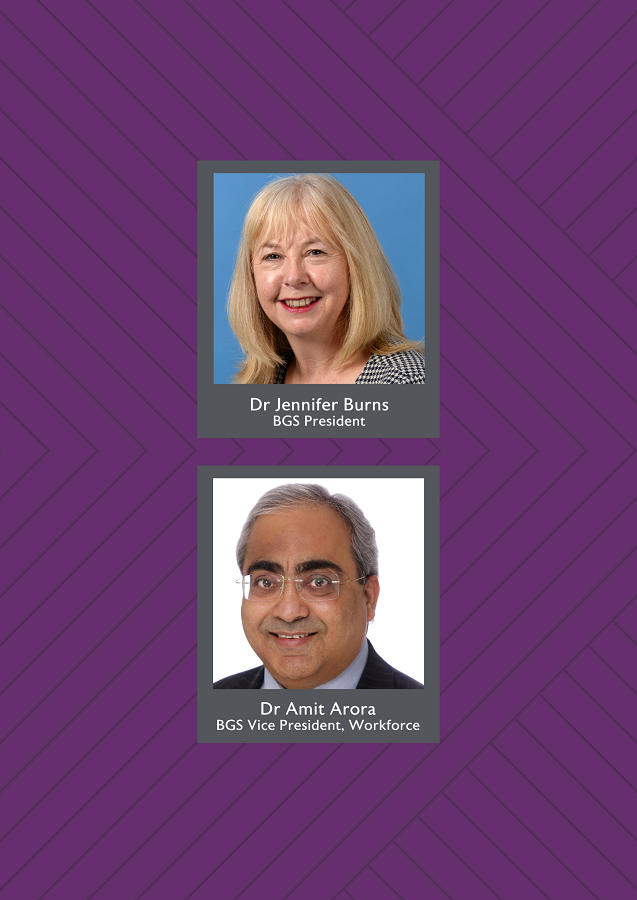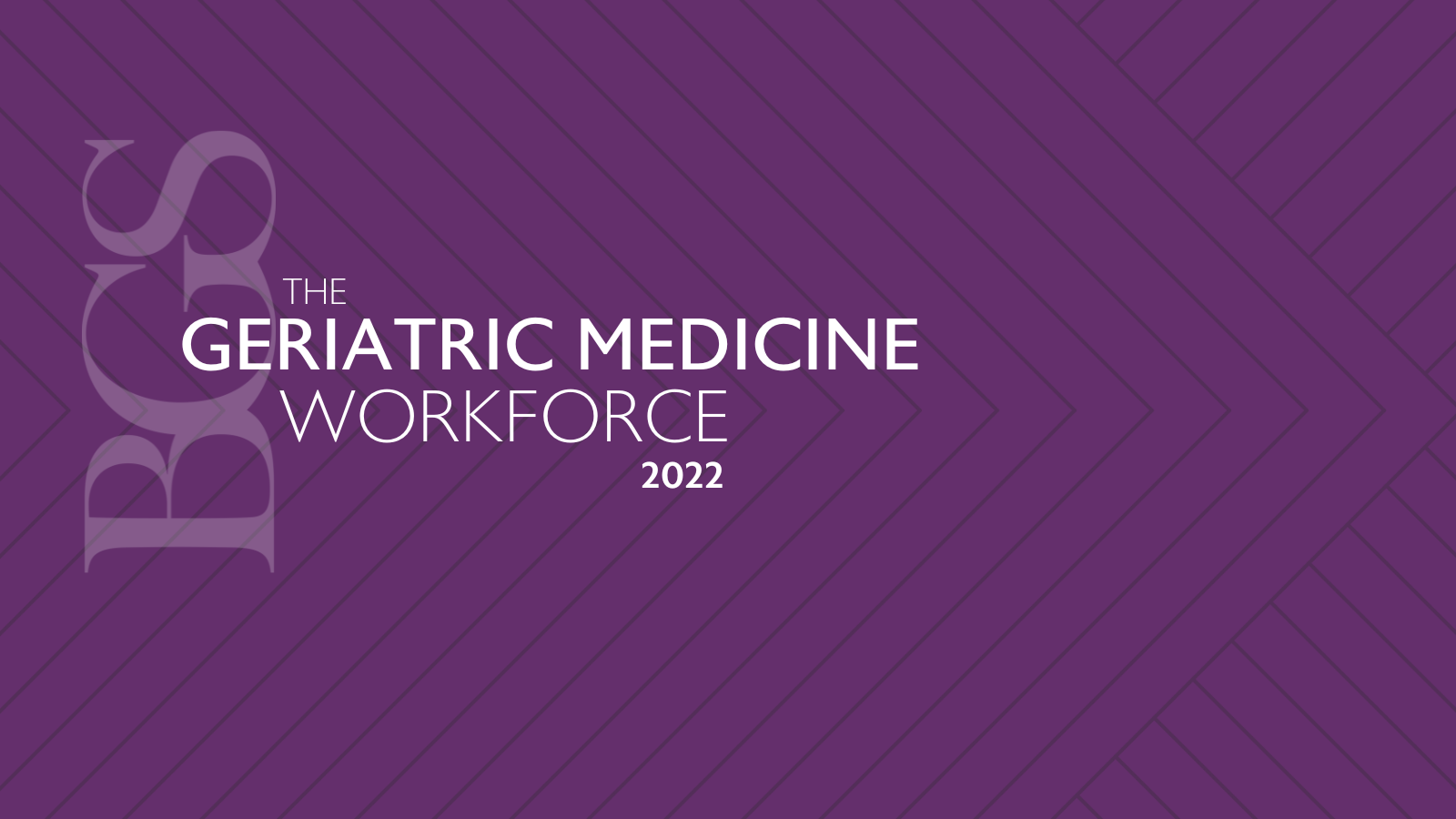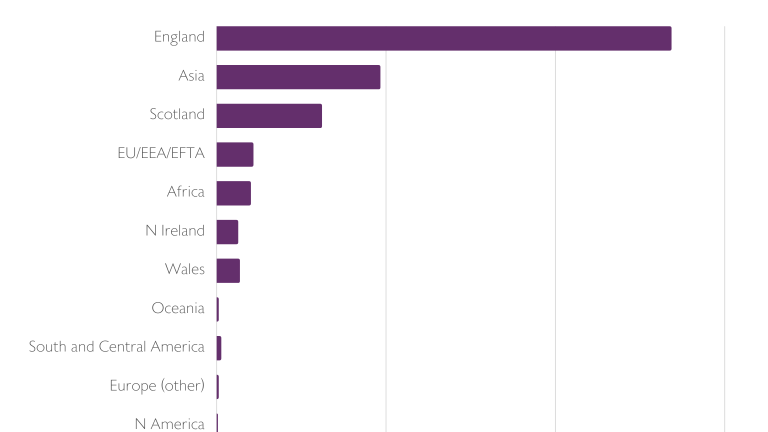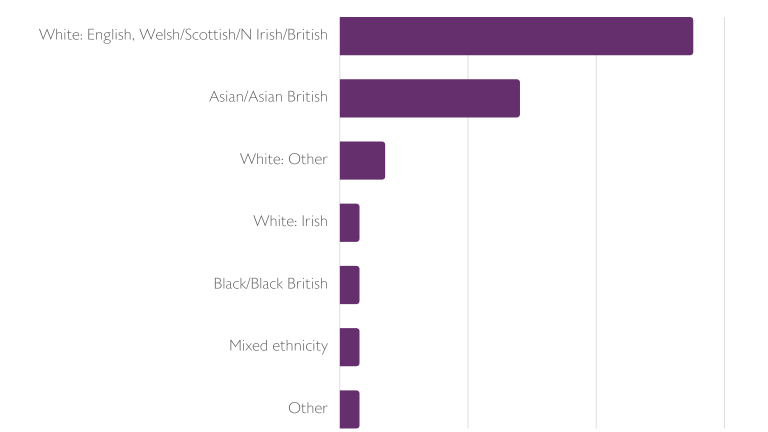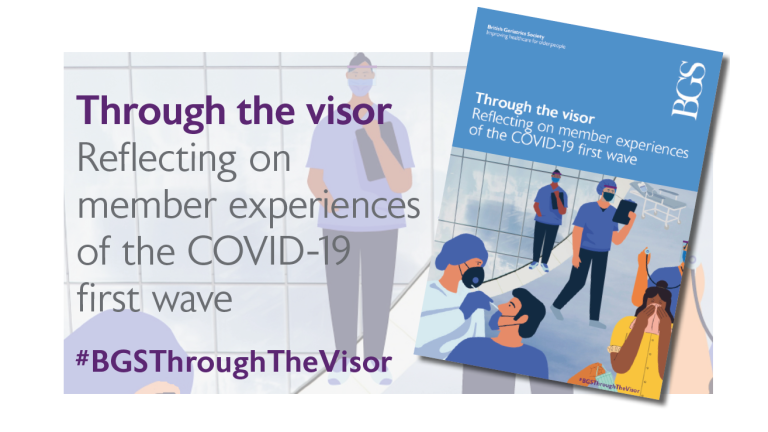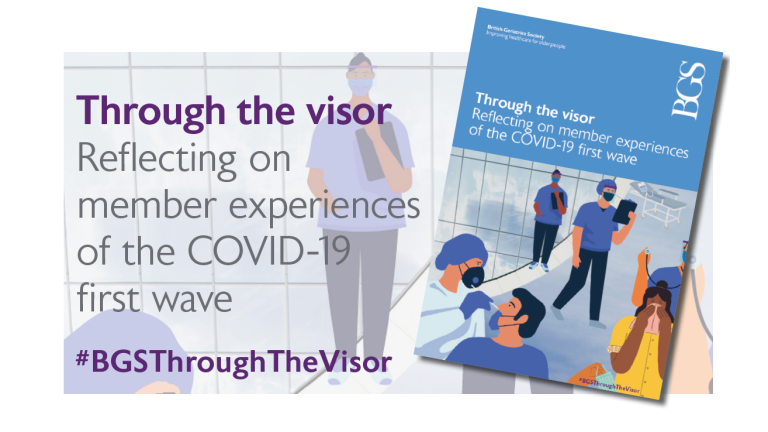The NHS has a workforce crisis and nowhere is this felt more acutely than within older people’s care. Older people are the largest population group using NHS services, with over-65s accounting for almost 40% of hospital admissions.1 For many years, the recruitment and training of specialists in older people’s care has failed to keep pace with the growth in demand for healthcare from an ageing population.
The census of consultant physicians is an annual project, conducted by the RCP, which collects data about the consultant physician and higher specialty trainee workforce across the four nations of the UK. The 2020 census was conducted by survey between 17 November 2020 and 29 January 2021. The RCP sent surveys to 15,383 consultants and received 3,736 completed surveys – a response rate of 24%. In addition to the survey, new consultants who work for the NHS were added and those who no longer work in the UK were removed from RCP records, giving data about a total of 17,219 consultants in the NHS. The RCP team extrapolated findings from the survey to this overall group. The RCP also publishes a Higher Speciality Trainee (HST) Census Trend Data Toolkit. The latest data available from this HST census is for 2019-2020.
The data can be broken down by specialty, enabling the BGS to understand trends in the medical workforce providing care for older people. It enables us to identify where gaps exist, to consider the implications for the future workforce as different parts of the system plan in a context of a rising demand for healthcare for older people and to formulate possible solutions to workforce shortages. For the purposes of this report, we have analysed the data provided for consultants and higher specialty trainees who identify their speciality as ‘geriatric medicine’. We acknowledge that this does not include some doctors who trained in geriatrics but may use other terms such as ‘general internal medicine’ or ‘stroke medicine’ to describe their specialty. We have also not captured those from other specialties, for whom older people make up a large proportion of their patient population. Throughout the report we have made comparisons to the consultant workforce overall and to consultant cardiologists, as the largest medical specialty.
Healthcare for older people is delivered by multidisciplinary teams, of which geriatricians are one part. This report focuses on the medical workforce as this is where the data currently exists. However, we acknowledge the need for data about the wider workforce caring for older people and as a Society will endeavour to gather this data.
The RCP Census Data Toolkit 2020 shows that there are 1,429 consultant geriatricians in England, 158 in Scotland, 110 in Wales and 50 in Northern Ireland (total 1747). The census data shows that geriatric medicine is the second largest specialty with only cardiology having more consultants.
Of the consultant geriatricians, 45% are women and 55% are men. Geriatric medicine appears to have a slightly higher proportion of women than is typical across medicine, with 38% of consultants across all specialties identifying as female and only 15% of consultant cardiologists identifying as female. Most consultant geriatricians are aged in their 40s with a total of 38% of respondents saying that they were aged either 40 to 44 or 45 to 49. 17% of respondents were aged between 50 and 54 with 15% saying they were either between 35 to 39 or 55 to 59.
Higher Speciality Trainee (HST) Census Trend Data shows that there are 808 trainees specialising in geriatric medicine. 82% of these trainees are in England, 10% in Scotland, 6% in Wales and 2% in Northern Ireland. 73% of them are women and 27% of them are men. The majority of HSTs in geriatric medicine are aged 31-35 years-old (58%), with 15% aged under 30 and 28% aged over 36.
Nearly a quarter of both HSTs and consultants work less than full time (LTFT). 22% of HSTs in geriatric medicine work LTFT compared to 23% of consultant geriatricians. This is a growing trend – in 2007, 10% of geriatric medicine consultants worked LTFT. Surveys have shown that an increasing proportion of HSTs moving into consultant posts aspire to work LTFT. Of the consultants who said they work LTFT, 74% were women. Of the HSTs who work LTFT, 93% were women. It appears that the proportion of consultant geriatricians working LTFT is consistent with consultants across the board with 24% of consultants overall working LTFT. However, flexible working in geriatric medicine appears to be more common than some individual specialties with only 10% of consultant cardiologists working LTFT. In addition, only 15% of HSTs across all specialties work LTFT, suggesting that flexible working patterns are more common among trainees in geriatric medicine. BGS is supportive of flexible working arrangements, including LTFT working, and published a position statement on this in 2021.4
Ninety per cent of consultant geriatricians are employed by the NHS; 7% hold academic posts and 2% hold their NHS post alongside another post (for example an NHS/hospice post). 32% of consultant geriatricians undertake some community work. This is significantly higher than consultants overall with only 15% of consultants across all specialities and 10% of cardiologists undertaking community work. This is perhaps not surprising given the trend towards treating more older people closer to home.
While we know that there are not enough geriatricians to serve the rapidly ageing population, we also know that the geriatricians are unevenly spread across the UK. This means that some parts of the country are better served than others in terms of senior medical expertise in the healthcare of older people. The average population per full time equivalent (FTE) consultant geriatrician is 43,587; the median is 40,549. The best served parts of the country are Wales, Northern and South West while the East Midlands, Wessex and West Midlands have the fewest geriatricians per capita. A full regional breakdown of consultant geriatricians per capita is available in appendix 1. The data is further broken down into sub-regions, which adds Scotland North and London South to the number of regions with high population per FTE consultant geriatrician. It will be important for system leaders to look at workforce data at a local level to ensure that they have the workforce required to meet the needs of the population they serve.
While data is available about the number of consultant geriatricians in each region compared to the population of the region, there is no indication of the geography of the regions. For instance, while some rural areas may appear to be well served or have relatively low population numbers, the geography of the region may mean that people have to travel long distances to acute hospitals to see geriatricians or that community geriatricians are not able to easily visit many patients.
It is worth noting the disparity between south London and the other two London sub-regions. There is no explanation in the dataset of why the total number of FTE consultant geriatricians in central and north east London is so much higher than in the other two London sub-regions. The population per FTE consultant geriatrician in south London is also roughly double each of the other two London sub-regions. This could in part be due to role diversification opportunities within some regions. South London may also have a relatively young population compared to other parts of the capital.
Data indicates that 29% of consultant geriatricians graduated in medicine from outside the UK. This is consistent with figures from across medicine with 28% of all consultants graduating outside the UK. While the majority of current consultants studied and qualified in England, the second largest group are graduates who studied in Asia, followed by Scotland. 95% of all consultant geriatricians in UK are British citizens, compared to 93% of all consultants in the UK. Of the non-UK trained cohort of consultant geriatricians,75% are male and 25% are female (see Figure 1).
Three per cent of consultant geriatricians are Black British, compared to 2% of all consultants, and 28% are Asian/British-Asian, the same as for all consultants. This is also roughly consistent with other individual specialties with 2% of consultant cardiologists identifying as Black British and 31% saying they are Asian/British-Asian. According to national census data from 2011, 13% of the United Kingdom population is minority ethnic (see Figure 2).5
Eighty-eight percent of consultant geriatricians who completed the survey said that they have a current job plan, with 10.49 as the contracted programmed activities (PAs). In the consultant contract, a PA is a half-day at work (roughly 4 hours) though out of hours timing may vary. However, they worked 11.13 mean PAs per week, equating to 2.6 mean excess hours worked per week. These figures are reasonably consistent across specialties with 89% of consultants across the board having a job plan and contracted to work a mean 10.38 PAs per week. The mean PAs worked across all specialties was 11.29.
Ninety-seven per cent of consultant geriatricians look after non-specialty inpatients (defined as inpatients who are not under the care of one specialty), and 43% take part in the acute unselected medical take. This is significantly higher than other specialties with 69% of consultants overall looking after non-specialty inpatients and 30% of consultants overall participating in the unselected acute take. 60% of cardiologists look after non-specialty patients and only 10% take part in the unselected acute take. This suggests that older people are a large proportion of hospital inpatients. It is also worth noting that this survey took place during the COVID-19 pandemic when BGS members told us that they were involved in the care of younger patients who would not normally be considered their responsibility. The expert generalist nature of a geriatrician’s skills meant that they were able to take on the care of this additional patient group. But it does mean a loss of their time available to care for older patients with complex conditions, frailty and multi-morbidity.
Seventy per cent of consultant geriatricians work extra hours because of clinical workload. Other reasons for working additional hours include the COVID response, additional responsibilities or external duties and covering for colleagues or vacancies within departments. These figures are not significantly different to consultants overall with 72% of all consultants and 78% of cardiologists saying they work extra hours because of their clinical workload and quoting the same reasons as geriatricians.
Thirty six percent of consultant geriatricians are expected to reach the age of 65 in the next decade, and 54% the age of 60. 62.2 is the mean intended retirement age, with 48% reaching this age in the next decade. This is consistent across medicine with 36% of all consultants and 38% of cardiologists expected to reach 65 in the next decade. In geriatric medicine, this equates to between 627 and 945 consultant geriatricians, who will need to be replaced.
The challenge of a decline in FTE numbers is further compounded by the current trends detailed above, which show that almost a quarter of geriatricians may choose to work LTFT, reducing the FTE numbers further. It takes an average of 16 years to train a consultant, so even a significant increase in medical school places would only cater for the gaps created by retirements and LTFT working. While these issues exist across medicine, the needs and demands of an ageing population mean they will be felt more acutely within geriatric medicine.
Of the consultant geriatricians asked, 68% said that they had locum staffing vacancies within their Trust (grade not specified). 48% said that they had unsuccessfully tried to appoint a consultant in the last two years. 22% said that there is a consultant vacancy in their department which is not staffed by a locum. These figures appear to be worse for geriatric medicine than for medicine overall. 48% of all consultants and 53% of cardiologists reported having locums within their departments. 37% of all consultants and 24% of cardiologists said that they had been unable to recruit to an advertised consultant post within the last three years.
Anecdotal evidence from BGS members tells us that many trusts have not been advertising consultant vacancies as they are aware of national shortages and have made unsuccessful attempts previously. Some have developed reconfigured roles to cover such gaps.
The above data relates only to consultant geriatricians. We are aware that we have little data in relation to non-consultant doctors and other members of the MDT. We are working with the RCP, Health Education England and NHS England to get data on other MDT professionals who are involved in the care of older people both in hospitals and community settings. These include doctors of various non-consultant grades, Advanced Clinical Practitioners (ACPs), therapists, community nurses, specialist nurses and other similar roles. While models vary in different parts of the country, the availability of different MDT members will affect the services provided locally, and the scope exists to expand the numbers of healthcare professionals and support skills development and progression within this wider group.
Workforce shortages remain one of the biggest challenges facing the NHS. The RCP Census Data Toolkit focuses on the consultant physician workforce, providing evidence for individual specialties. Reflecting on the analysis, we can begin to draw some conclusions.
It is clear that there are not enough geriatricians. Given that it takes an average of 16 years (from entry to medical school) to train a consultant geriatrician, even a substantial increase in the number of medical training places will take many years to come to fruition, though this is sorely needed. The nature of the rapidly ageing population means we cannot wait for new geriatricians to be trained. Practical solutions need to be developed to support and empower the current workforce to care for our older population. This will need to come through the recruitment, retention, development and support of the specialist multidisciplinary workforce across different care settings. In parallel to this, there needs to be encouragement, support and training of other specialists to look after older populations more effectively. Older people comprise the NHS’s largest user group and, with the exception of those involved in child and maternity services, all healthcare professionals will care for older people more than any other population group. It is vital that all healthcare professionals, including specialists in other areas, have an understanding of frailty and other complex conditions that affect older people.
Utilising the full potential of the existing middle grade doctors and offering them support to gain CCT or CESR certification is a priority and we will be releasing guidance about this in our newsletter soon.
There is considerable geographic variation in the data with some parts of the country better served by consultant geriatricians than others. More work is needed to explore the reasons for this and possible solutions. Data is also required below national level such as at the level of Integrated Care Systems or Acute Hospitals and we are working on this.
It is also important to ensure that members of the wider multidisciplinary team (MDT) are supported to work to the top of their licence and further develop their skills and competencies. The current design of the pay and progression structure for senior nurses and AHPs limits those who want to continue to progress clinically rather than moving into purely management roles. Advanced practice offers an important route for experienced clinical staff to retain a patient-facing focus as they take on increasingly senior decision-making responsibilities. Advanced practice is a vital means of increasing senior capacity in older people’s healthcare. In addition, newer roles such as physician associates and apprentices offer scope for specialisation in older people’s healthcare and need to be considered as part of a multi-faceted approach to recruiting and retaining healthcare professionals and supporting their development.
There is also a need to encourage medical students and internal medicine trainees (IMTs) to specialise in geriatric medicine. Hospital executives also have a role to play in ensuring that they invest in frailty training at all levels of staff across the hospital.
The BGS is working with various national bodies and professional societies to assess the gaps in the older people’s healthcare workforce. We have also agreed with the RCP to include some specific questions relevant to geriatric medicine in the next census and to produce a bespoke report for geriatric medicine from their survey. We intend to carry out our own workforce survey this year as part of our ongoing work in this area.
The BGS workforce group will consider other ways of supporting recruitment and retention, including attracting more medical students into geriatric medicine and helping colleagues in other specialties improve their skills and knowledge in the care of older people. However, we acknowledge that the issues facing the older people’s healthcare workforce are an indication of the wider challenge facing the NHS and the social care workforce. This requires sustained Government action to solve, and must include the publication of a long-term NHS workforce strategy.
Geriatric medicine is the second largest medical specialty, which reflects the reality of older people being the largest user group of NHS services. Geriatricians are therefore well represented within the RCP census and the census is a useful source of data about the medical workforce for older people’s healthcare. However, geriatricians are just one element of the multidisciplinary team caring for older people. In addition, a majority of geriatricians are acute hospital-based while most of older people’s healthcare is delivered outside a hospital setting. More data is required about the wider multidisciplinary team and the provision of care in community settings. It is also essential that geriatricians are available to provide support to GPs and nurses to enable them to care for older people in the community.
The crisis facing the older people’s healthcare workforce is not going to go away. Immediate and sustained action is needed to recruit, retain, develop and support the specialist and wider workforce to ensure that older people now and in the future are able to receive the care that they need, when and where they need it.
